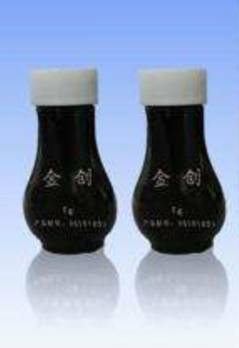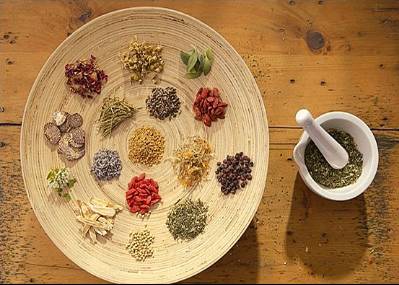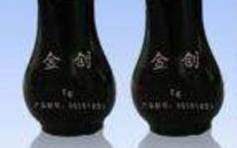
In previous articles, it was mentioned that authors of martial arts novels particularly enjoy using powders, and the reason for this can be discussed from the characteristics of powders. Powders are the most dispersed form among solid dosage forms, with small particle sizes and large specific surface areas. The phrase “散者散也,去急病用之” (The dispersive nature of powders is used to treat urgent illnesses) succinctly summarizes the characteristics of powders:
1. Compared to other solid dosage forms, powders are easy to disperse, dissolve quickly, are absorbed rapidly, and take effect swiftly. In novels, powders are often depicted as poisons that need to incapacitate a person instantly, hence the need for a fast-acting dosage form.
2. The preparation process is simple and convenient for carrying. Martial artists often travel extensively, so the medicine needs to be easy to transport and not require a large “workshop,” making complex preparation methods impractical.
3. The dosage is small, making it easy to take and more acceptable. You often see characters in novels using their fingernails to scoop a bit of poison, hiding it under their nails, and then… you know what happens next.
4. External powders cover a large area and can simultaneously provide protection, astringent effects, and promote wound healing for external injuries. However, due to their high dispersion, powders can also increase adverse effects such as hygroscopicity, odor, irritability, and instability. They are often involved in fights and adventures, leading to injuries, hence the saying, “Young one, this is the ancestral golden wound powder, take it!”

The greatest feature of powders is their small dosage. Taking Wu Ling San (Five-Ingredient Powder) as an example, it first appeared in the Shang Han Lun (Treatise on Cold Damage) and is used to treat the Taiyang water accumulation syndrome and edema due to internal dampness. It consists of Fu Ling (Poria), Zea Xie (Alisma), Zhu Ling (Polyporus), Gui Zhi (Cinnamon Twig), and Bai Zhu (White Atractylodes). The recommended dosage is 27g per day, taken three times, which can treat bladder water retention syndrome.
With the fast pace of modern life and the scarcity of herbal materials, the traditional decoction method has become increasingly cumbersome and inconvenient, which restricts the development of traditional Chinese medicine (TCM). To conserve herbal materials and energy, and to address the current trend of herbal material shortages, many scholars are dedicated to the research and promotion of TCM powders.

Many hospital departments have developed decoction powders from their prescribed formulas, processing traditional herbal pieces into coarse powders, combining them in specific ratios to form a powder, and then mixing several powders or single herbs together to create a compound prescription. This approach reflects the TCM principle of syndrome differentiation and treatment while avoiding the complexity of preparing decoction powders from prescriptions. The preparation of decoction powders is simple and convenient for storage; each packet can be boiled with an appropriate amount of water for a few minutes to remove the residue for internal use. The small dosage of decoction powders can effectively extract the active ingredients from the herbs, enhancing the efficacy of the medicine. Due to the small amount used, it can save a significant amount of herbal materials, reduce costs, and lessen the burden on patients, hence it is known for its “simplicity, convenience, effectiveness, and affordability.” Most patients prefer powders, especially in pediatrics.
As an essential traditional dosage form, decoction powders not only retain the characteristics of traditional decoctions but also have a small dosage with significant economic and social benefits. In light of the current challenges of herbal resource shortages and rising material costs, promoting the application of decoction powders is a viable solution. However, there may be various issues in production, processing, storage, and usage that need to be addressed, so further research is required for the promotion of decoction powders.
Due to the high cost of San Qi (Notoginseng), it is mostly made into powder for oral administration. However, in outpatient settings, patients often complain about experiencing throat irritation when taking oral powders, indicating that if the production of powders is not refined, patients may experience discomfort such as throat irritation or even nausea and vomiting. If the production process is more refined, making the powders easier to swallow, these discomfort symptoms could be avoided. During my freshman year, I learned in the clinic with my teacher that for patients on long-term medication, the teacher placed a small grinder in the pharmacy, allowing us to help grind the prescriptions into powders, which patients could then take home to boil. This way, a single prescription could be divided into two doses, and the medicine did not need to be soaked, reducing the boiling time. During university, I dreaded getting sick; seeing a Western doctor could cost hundreds for a single check-up, and a TCM prescription could also cost dozens. After a week or two of medication, my monthly living expenses would be depleted. Our student health insurance covers half of the medical expenses, but the threshold fee is five hundred, so I tried to avoid getting sick as much as possible. Once, when I really needed medication, the teacher prescribed a formula, and I wanted to make it into an oral powder. I specifically used the grinder several times and sifted it into fine powder, but swallowing it was still quite difficult. Perhaps I was being too picky; in the end, I had to steep it in a thermos with boiling water and returned to making it into a “decoction powder.”

However, I thought at that time, ancient processing techniques were so primitive that the production of powders had to consider the different textures and properties of the herbs, employing various methods such as pounding, grinding, and filing to create suitable fragments or fine powders. For instance, the “filing” method is often used for herbs like Gan Cao (Licorice) and Huang Qi (Astragalus) that have a high fiber content, while the “pounding” method is used for seed-based herbs. The water-flying method can only produce extremely fine powders, but that is limited to certain shell or mineral-based herbs; most are still plant-based. Even when taken with rice soup, they can still be quite irritating to the throat! It’s no wonder that among the four major dosage forms of traditional medicine—pills, powders, pastes, and decoctions—only pills still hold a significant position in pharmacies today.

Decoction powders still face many unresolved issues. Firstly, there is the question of determining the appropriate degree of pulverization for herbal pieces. Is it better for each herb to have a smaller particle size, or should different herbs have different pulverization requirements based on their characteristics? The optimal degree of pulverization for each herb needs further exploration. Secondly, the clinical dosage ratio between decoction powders and traditional herbal pieces of the same prescription is difficult to determine. What is the relationship between the efficacy of decoction powders and the original herbal pieces? How to determine the optimal boiling time also requires gradual exploration.
When boiling decoction powders, there tends to be a lot of foam, which can easily overflow from the boiling pot and settle at the bottom, causing burning and making it difficult to clean. It may be beneficial to package the powders in bags before boiling. Packaged powders resemble tea bags; many hospitals now offer various tea bags for lung-clearing and weight loss, which are essentially similar to powders. If your condition is mild and you find it inconvenient to boil the medicine, you can directly mix the powders with water or steep them in boiling water, which is more suitable for the fast-paced lifestyle of modern society.
Powders can be taken orally or applied externally, and they act quickly, are easy to prepare, and convenient to take. They utilize a high degree of herbal materials, saving a significant amount of herbal resources and reducing boiling time. They are also more convenient to carry. Compared to decoctions, which mainly contain soluble components, powders contain the entire content of the herbs, including various coarse fibers and components that are insoluble in water or alcohol, thus preserving the medicinal properties of the herbs more completely. Powders can also be further processed into other dosage forms such as pastes, pills, capsules, and tablets, and they occupy a significant proportion in the usage of historical prescriptions. In the current context of needing to protect herbal resources and reduce material costs, inheriting and researching the application of traditional powders is beneficial for maintaining the characteristics of TCM and ensuring its sustainable development.

Long press the image above for 3 seconds to scan the QR code and follow us
If you like it, please give us a thumbs up!↙

